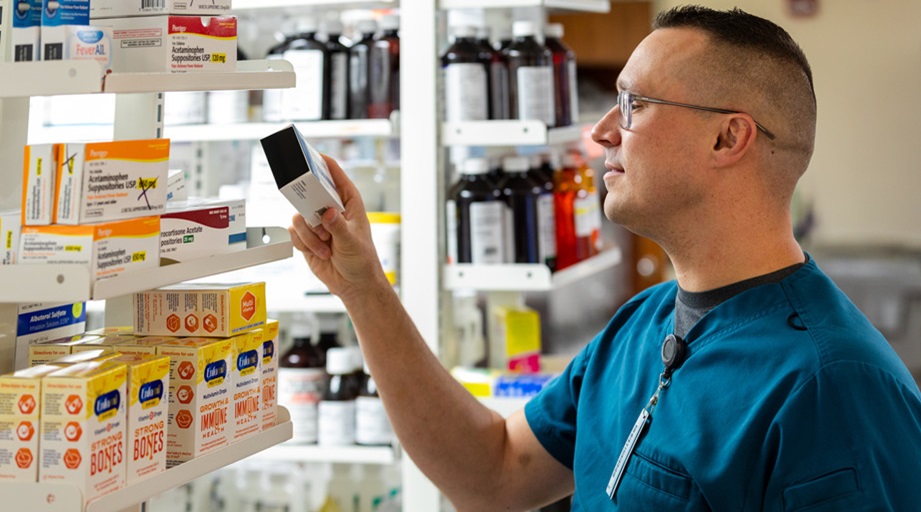
It can be daunting for busy pharmacists and pharmacy students to make time for volunteerism. But servant leadership is rich with rewards for individual practitioners and for the field — and can suit any stage of life, even as pharmacy professionals seek work-life balance.

A Dec. 10 session at the ASHP 2024 Midyear Clinical Meeting & Exhibition, Zooming into the Impact of Servant Leadership, will feature interactive discussions and tips from pharmacy professionals who have found success and professional growth as servant leaders.
The ASHP News Center chatted with session leaders Gillian P. Leung and Brittany Tschaen ahead of the Midyear meeting. They, along with panelists Lindsey R. Kelley and Molly Wascher, hope to help fellow pharmacists navigate potential barriers to servant leadership based on their own goals and fluctuating capacity.
“My involvement [with professional organizations] has changed since when I was a student, but I've always come back to servant leadership because it’s what energizes me to do what I do every day,” shared Leung, a pulmonary hypertension ambulatory clinical pharmacist with University of Kentucky Healthcare in Lexington.
Starting and staying engaged
The seeds of servant leadership — a term coined in 1970 by scholar Robert Greenleaf to emphasize volunteering for the wellbeing of others over personal benefit — are often planted in pharmacy school. Leung and Tschaen were both introduced to servant leadership at this age when they joined student-run professional organizations. They started small, helping with bake sales and other fundraisers, attending local pharmacy conferences and ASHP Policy Week, and participating in community service events like drug takeback programs.

Their leadership roles grew from there, with Tschaen joining the ASHP New Practitioners Forum (NPF) and eventually its executive committee. She served as president of the ASHP Delaware affiliate for a time and remains active with the ASHP Council on Therapeutics, among other roles. Leung joined ASHP a little later in her pharmacy journey as she honed her focus on health-system pharmacy and cardiology. She is active with NPF and currently serves as the liaison to the Section of Clinical Specialists and Scientists Section Advisory Group on Clinical Leadership.
The challenge for pharmacists is to remain engaged with professional organizations as they earn their degrees, embark on residencies or fellowships, and advance through their careers. Each professional chapter presents a potential drop-off point for engagement. Personal milestones such as getting married, starting a family, and becoming a caregiver to aging parents can also pose challenges as people juggle personal and professional responsibilities.
“You might be much more involved at some points and need to take a step back at other points,” acknowledged Tschaen, now a clinical pharmacist in internal medicine at Boston’s Massachusetts General Hospital. “The goal is to find a way to still have your voice and still have your space in your professional world, without completely stepping away.”
Mapping out a plan
In the session, speakers will draw from their personal experiences and real-world case studies to illustrate how pharmacists can make time for — and find joy in — servant leadership. Their advice includes:
- Take time to reflect. Consider what’s important to you, as one size does not fit all. You can then adjust this roadmap in every season of life and career. “Having a targeted approach to servant leadership can help pharmacists overcome different barriers and have a fulfilling life that integrates all their priorities,” said Leung.
- Know that servant leadership takes many forms. Leung and Tschaen emphasized the difference between “big L” and “little L” leadership. Joining an organization, serving on a committee, mentoring a colleague, or filling a gap in your workplace all count as servant leadership.
- Don’t go it alone. Inviting classmates and colleagues to join you can help you ease into new leadership responsibilities and add an element of fun as you give back to the profession.
- Embrace networking. Serving at the state and national level can help expand your network, expose you to new perspectives, and enhance career satisfaction.
- Know that the first step is often the hardest. “If you have a will and a curious mind, the opportunities to serve are endless. You just need to start somewhere,” Leung added.
A natural fit for pharmacy
In the session, Leung and Tschaen hope to empower Midyear attendees to realize that pharmacists are, by nature, servant leaders. When you design protocols and standard operating procedures to optimize patient safety at your hospital or health system, for example, that’s servant leadership.
Said Tschaen: “I think servant leadership resonates with pharmacists because of why we went into pharmacy to begin with: to serve and advocate for patients in our community.”








